Discussion Section
Presented here for the RMNF Showcase is a rare look at a time capsule. This 1898 dated Tula Arsenal M91 has somehow survived for over 100 years without ever having succumbed to the updates, refurbishments, and transformations that are most commonly seen for this infantry rifle.
1898 Tula Mosin Nagant, Model of 1891


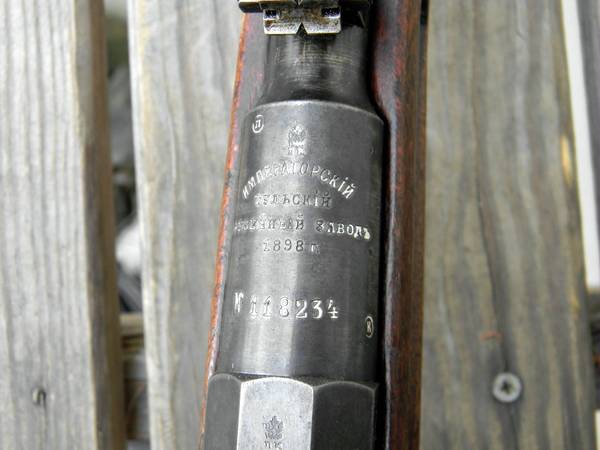
Original Matching
To identify an original matching Mosin Nagant, it must be demonstrated that all serial numbered parts (barrel, bolt, floorplate, buttplate) are stamped with the same die set, in the same font, and with no appearance of grinding (scrubbing), lined out numbers, or stamping of blank replacement parts. Below are the original serial number stamps.
It should be noted that the usual observed placement of the buttplate serial number on the top tang of Mosin Nagants does not appear on this rifle. Instead, it is found on the rear face of the buttplate. While I have made inquiries to other collectors on this aspect, I have only confirmed one other with this characteristic. Zeebill, of RMNF, has relayed that his original matching 1900 Tula also has the serial number on the rear face of the buttplate. It is unknown to me at this time if this practice was specific to the Tula Arsenal, or the time span for the serial placement. A documented 1896 Izhevsk buttplate is shown with the serial on the top tang
Barrel, bolt, floorplate, and buttplate serials. Early production M91's also had serial numbers stamped on the rear of the bolt cocking knob. This number is also done in a matching font.
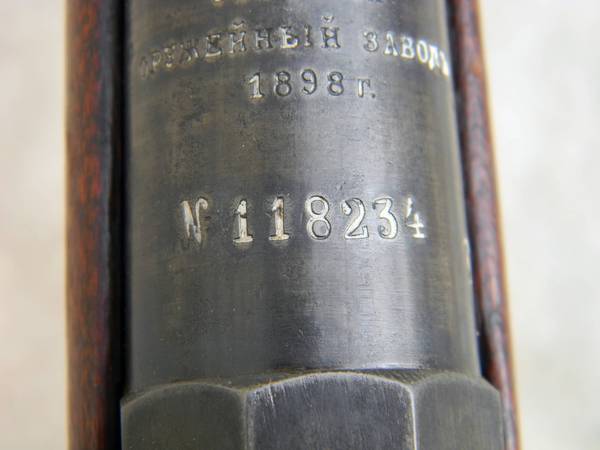
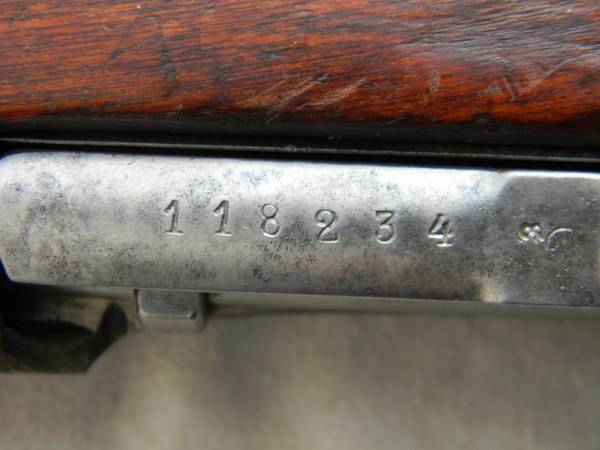
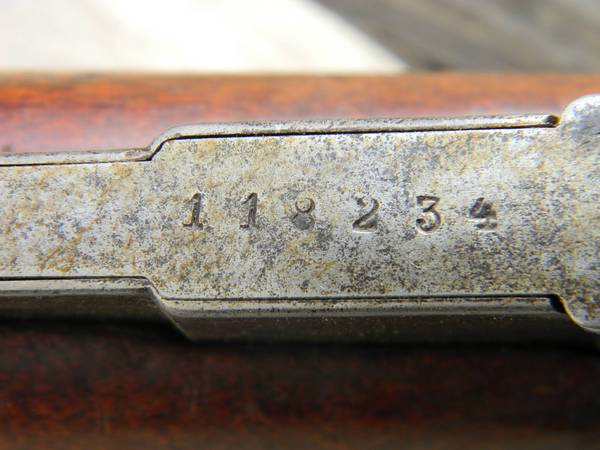
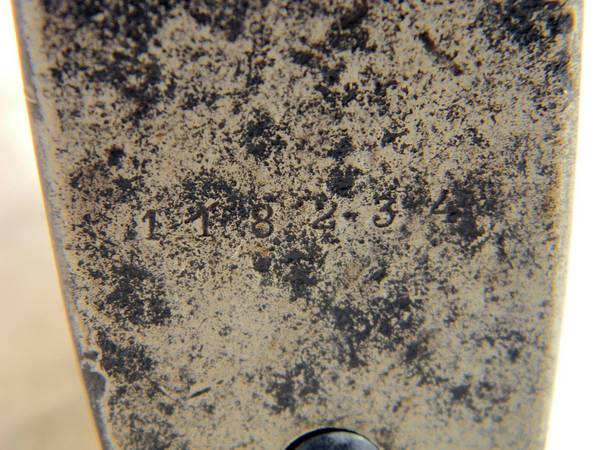
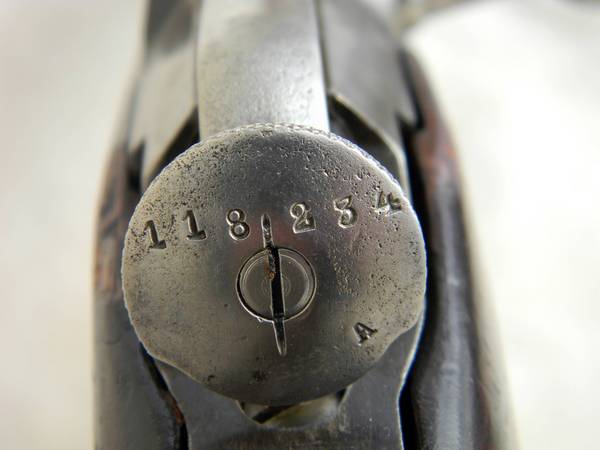
1896 Izhevsk (bow and arrow arsenal stamp) buttplate serial location on the top tang, for comparison to the 1898 Tula top tang.
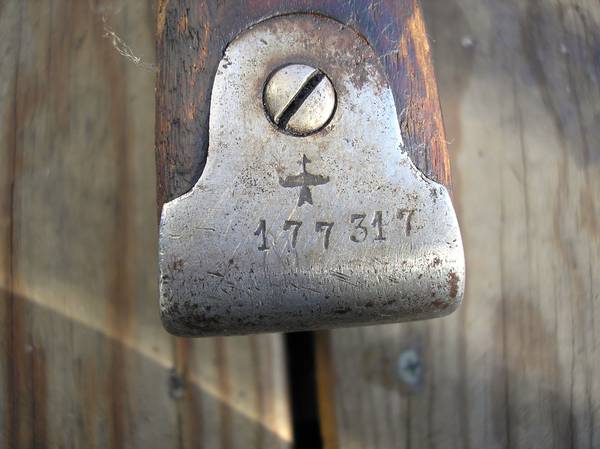
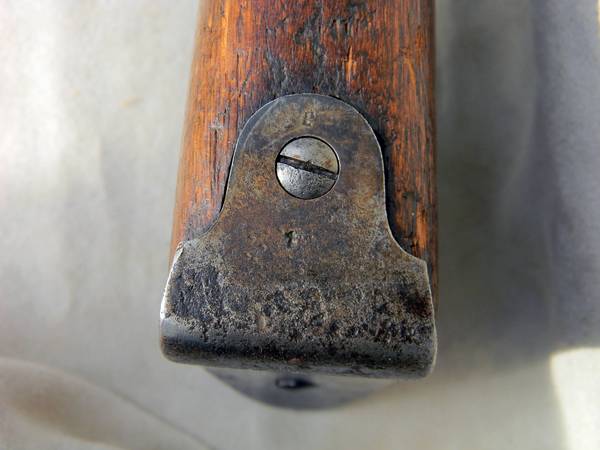
Early Features, No Upgrades
The Model 1891 underwent many design alterations over the course of its production, both during original assembly and later modernization upgrades. Below is a link to show the evolution of features for the M91. This 1898 Tula would fall into 5th configuration
http://7.62x54r.net/MosinID/MosinM91R.htm
Rear Sight
The most notable feature is the early flat rear sight leaf, graduated to 2700 arshini (approx. 2100 yds.). Most Russian M91's were upgraded to the curved Konovalov rear sight leaf (3200 arshini), with the advent of the Spitzer bullet design of 1908. A curved sight leaf is pictured for comparison. The sight bases remained the same.
Flat leaf
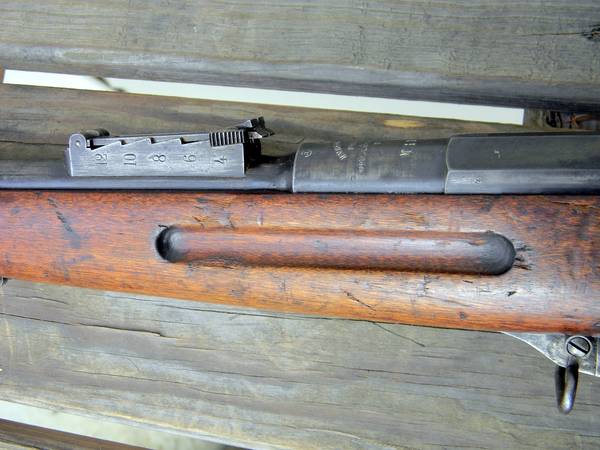
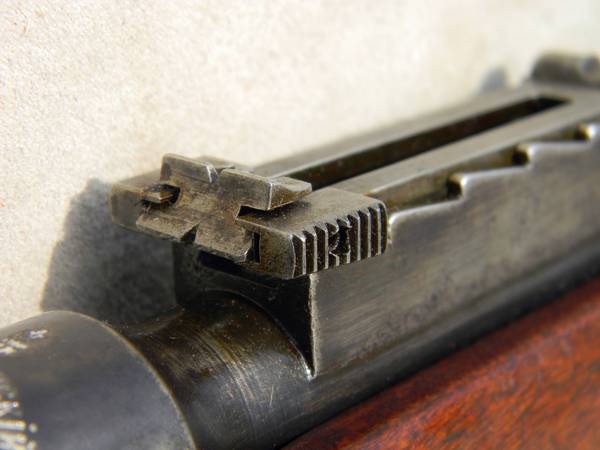
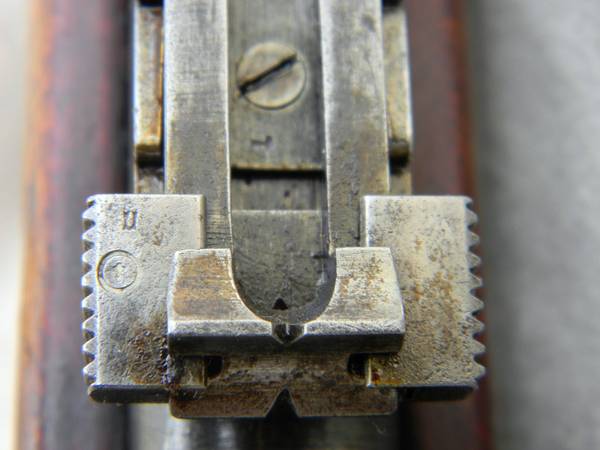
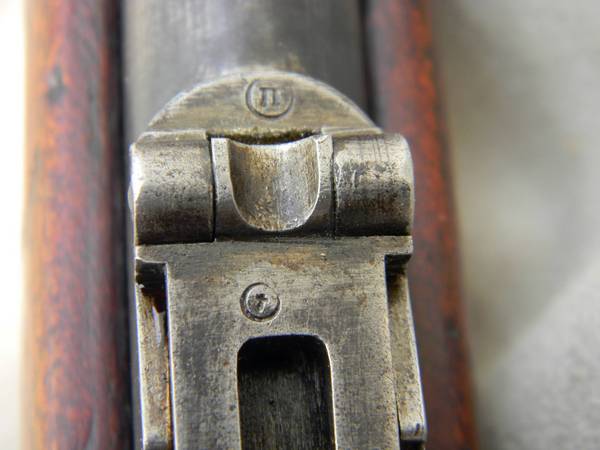
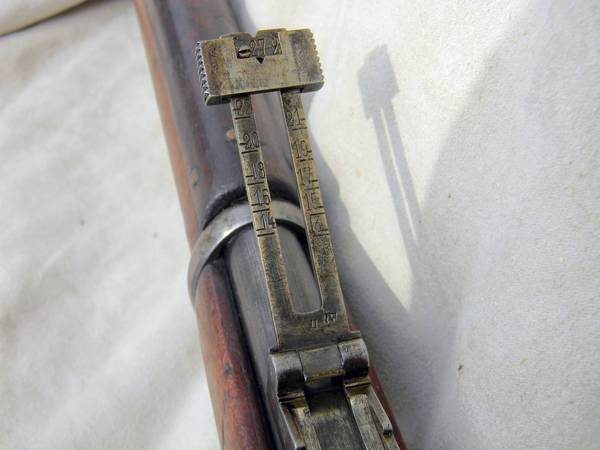
Curved leaf
Stock - No Crossbolt or Sling Slots, Cartouche
As can be observed in the M91 model link above, upgrades were also done to the stocks. First, wooden crossbolts were added for reinforcement behind the recoil lug of the receiver, and eventually, steel crossbolts were retrofitted for the stocks in 1909. Sling slots, which were standard for early Dragoon and Cossack M91's, were also added to infantry rifles in 1908. This 1898 Tula has no crossbolt or sling slots.

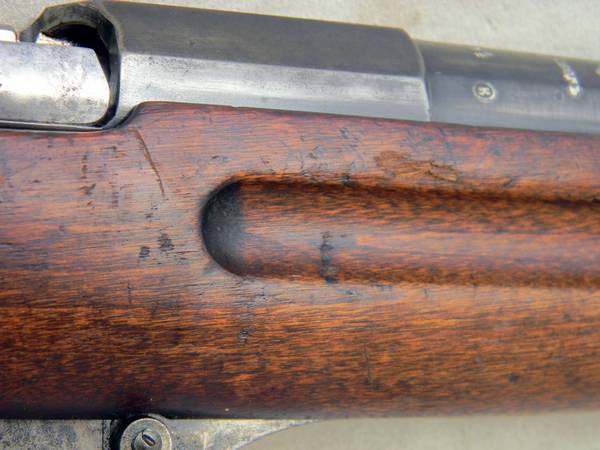
The worn Tula Arsenal stock cartouche is no longer legible, but the outline is still visible on the right side buttstock.
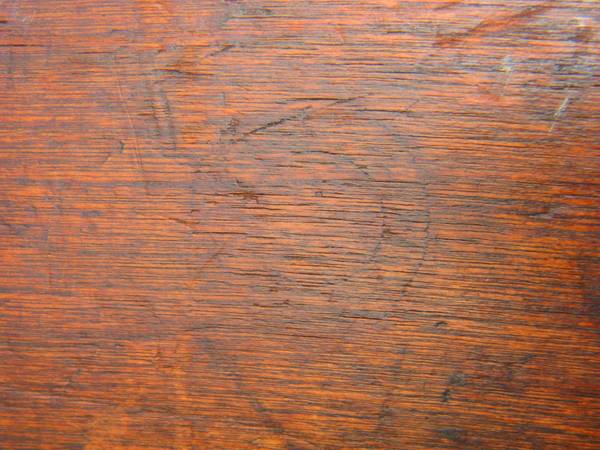
Sling Swivel.
Only one sling swivel is found on the front hinge of the magazine. Earlier M91 also had a sling swivel on the front barrel band, but this feature was dropped sometime after 1896. In order to accommodate a sling, a hook was passed around the tightening bolt of the front barrel band. Very few of these styled slings remain today, and it is difficult to locate an example. But Vic Thomas of mosinnagant.net has provided a reproduction example, which can be viewed as the second sling configuration in the folowing link.
http://mosinnagant.net/USSR/RussianComblocslings.asp
Mag swivel and front band (note: barrel bands were originally found to be installed backwards when I received the rifle. They have since been returned with the screw head on the right side of the gun.)
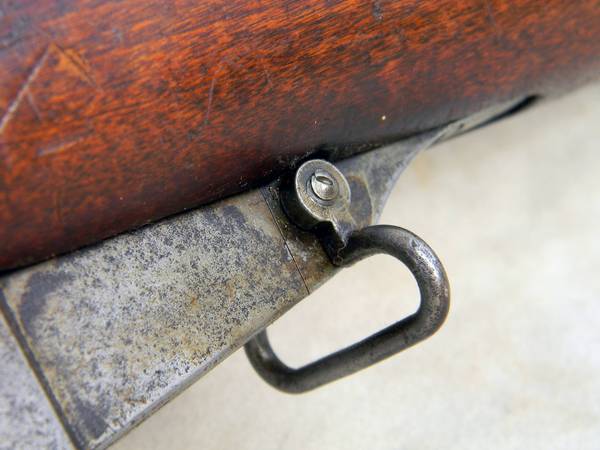
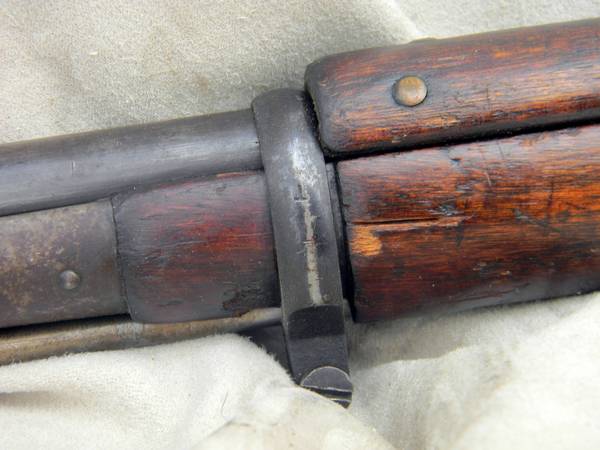
Arsenal Markings
This early configuration Tula appears to be furnished with all of the original factory parts, though there is no absolute certainty to substantiate this claim. But all identifiable parts are Tula marked with the hammer stamp (sometimes circled), and are period correct for the 1898 date.
Note: Picture of the Tula hammer stamp on the magazine follower is not shown, as I did not think to look for it during the photo shoot. But it is present on the underside of the follower.
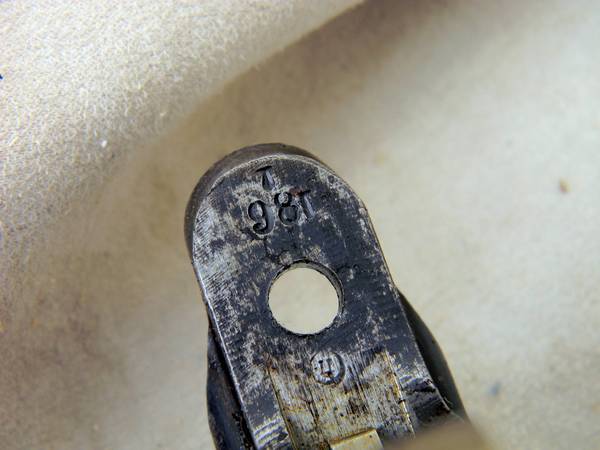
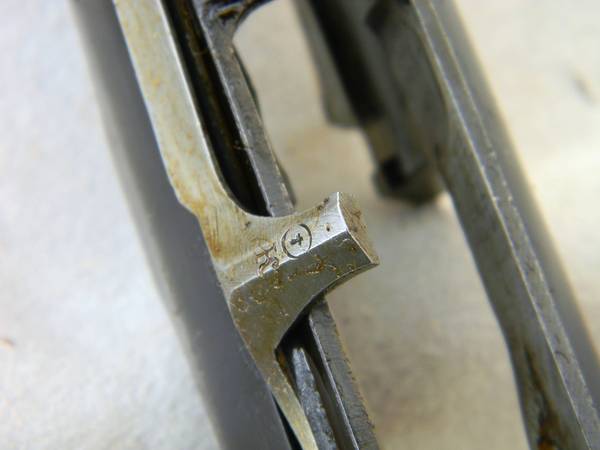
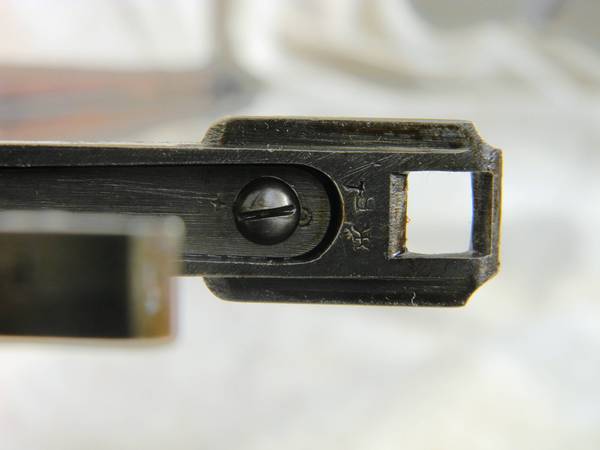
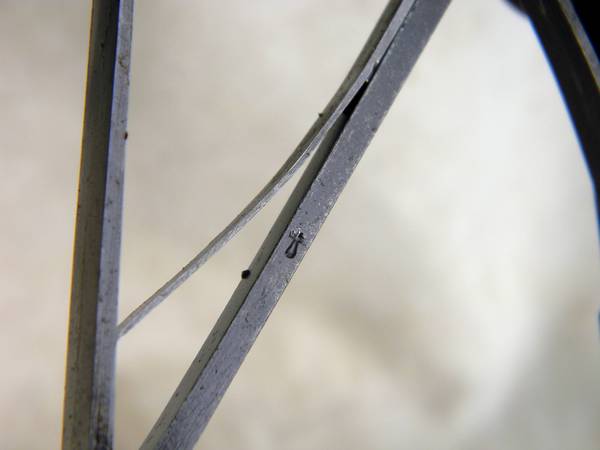
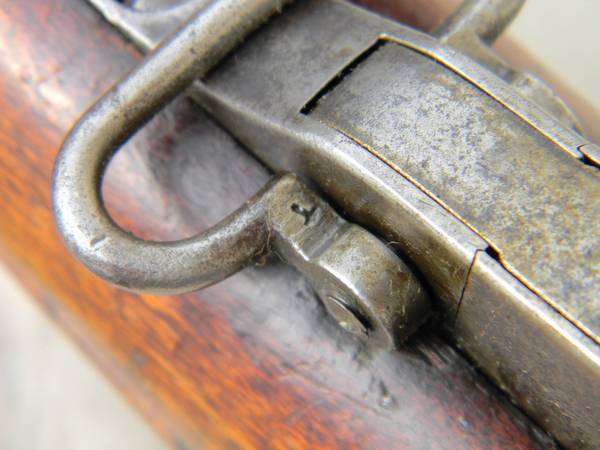
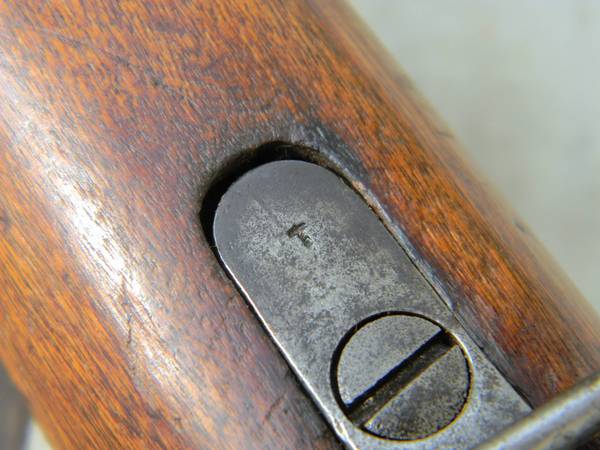
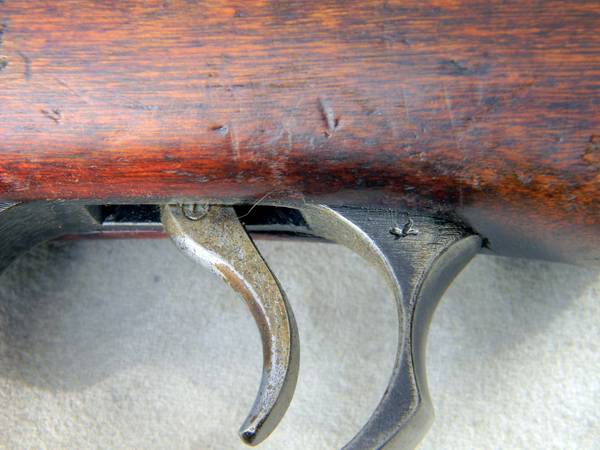
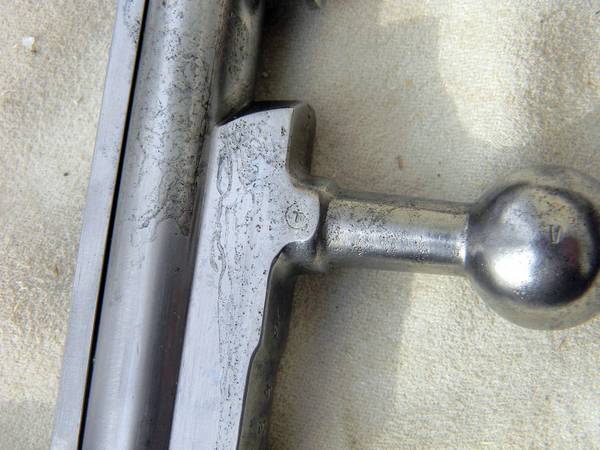
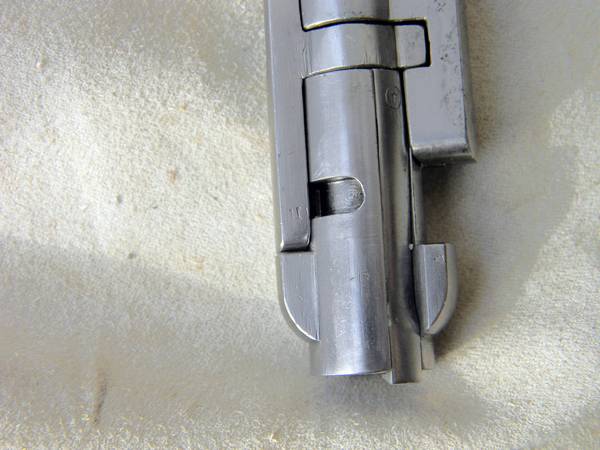
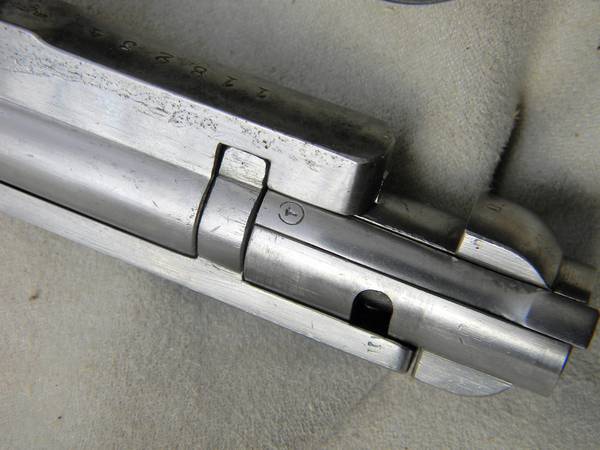
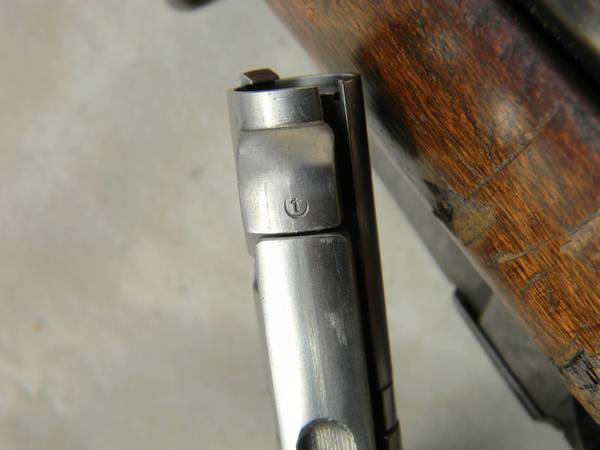



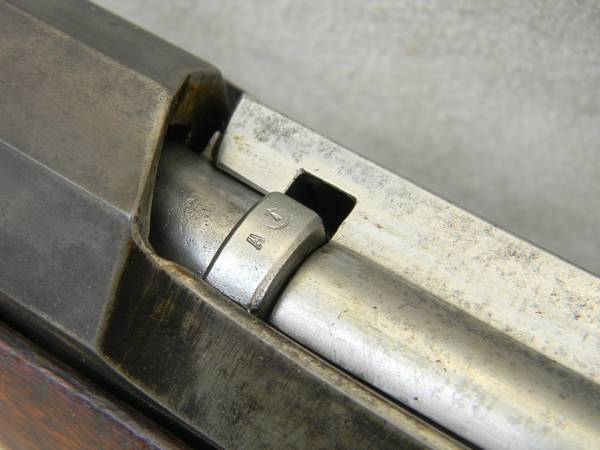
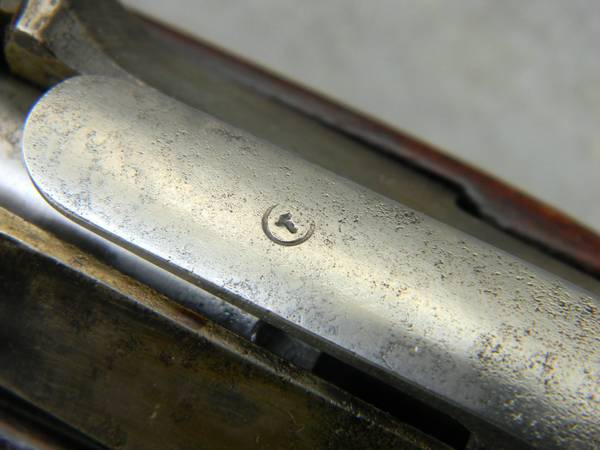

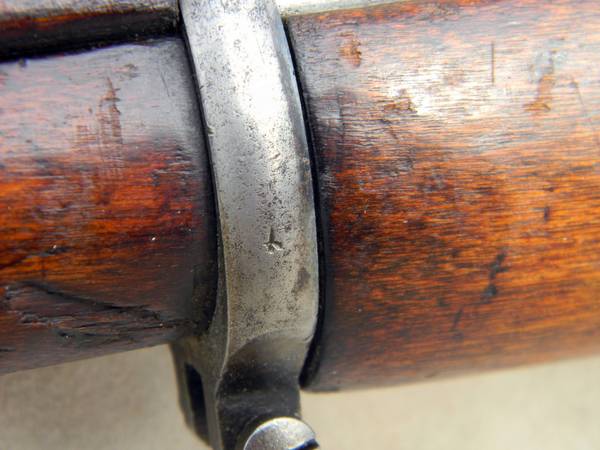

History
Nearly all M91's that remained in Russian possession received the various upgrades, arsenal reconditioning, and replacement or refitting of worn parts. In general, M91's that were rearsenaled in Finland, or any regions such as the Balkan countries, would also have received the upgraded sight/stock features and replacement of various parts. So, it is quite unusual to observe an M91 in its original configuration.
Then, how would such a specimen have survived for over a century without upgrades? Good question!
Here, only theories can be presented. First, it is unlikely that the gun remained in Russia, or it would have been upgraded. Two possibilities for its exodus from Russia could have been a Japanese capture from the Russo-Japanese War of 1904-1905, or a Chinese capture from the Boxer Rebellion in Northern China from 1899-1901.
http://en.wikipedia.org/wiki/Russo-Japanese_War
http://en.wikipedia.org/wiki/Boxer_Rebellion
How the gun left Russian possession is unknown, but wherever it resided, it was preserved in good condition. How it subsequently made its way to the U.S. is yet another mystery. But a likely scenario would be a GI bringback, following WWII. I acquired it from a collector who had it in his possession for over 30 years, and his recollection was that it was in another collection for at least another 30 years prior. So it has been in the U.S. since at least the early 1950's, and possibly before.
In conclusion, the relative rarity of such an original appearing specimen places this gun at or near the top shelf of any Mosin Nagant collection. So, if a collector is ever presented with the opportunity to acquire one, the purchase should be carefully considered if priced within reason. A conservative estimated value, in the year 2013, would be from $2 -3,000. Maybe not in everyone's budget realm, but if it can be financially feasible, it should be purchased right away if found. Due to attrition and the frequent travels and upgrades of the M91, the chances of another original coming into availability are slim, to almost none.
I'm very humbled to be able to present this fine gun for the RMNF Showcase.
A few more miscellaneous pics. Of interest, there is the letter "A" stamped on the bolt knob. Though not shown below, the letter "A" also appears on the cocking knob, the bolt head, and the bolt connector.

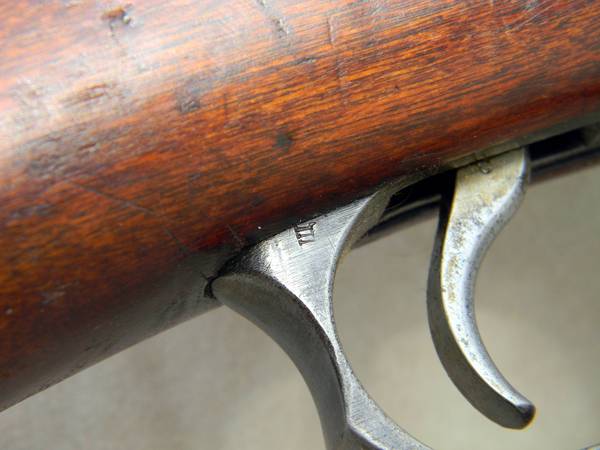
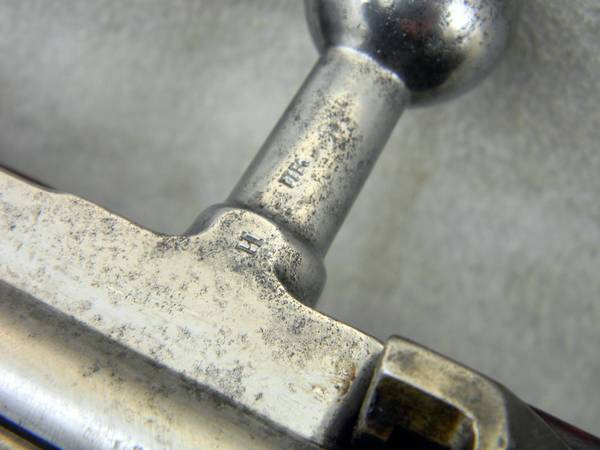
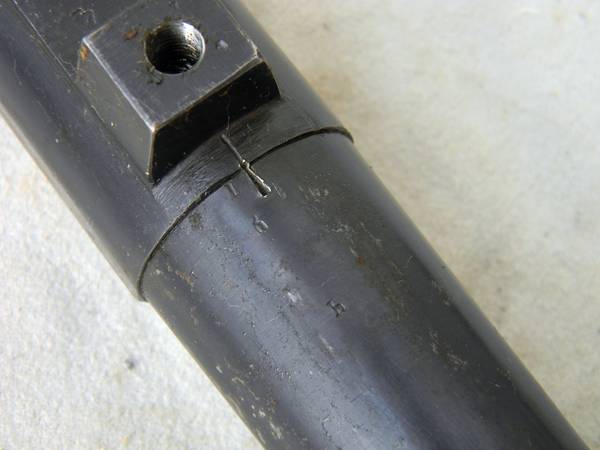
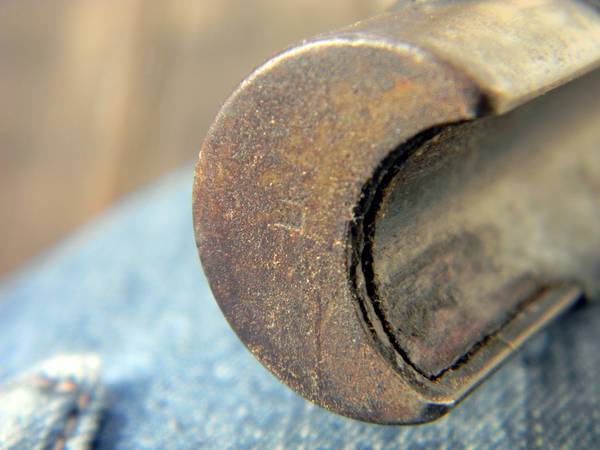
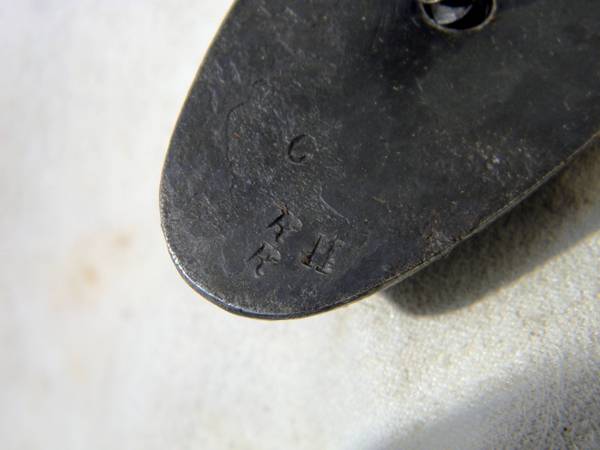
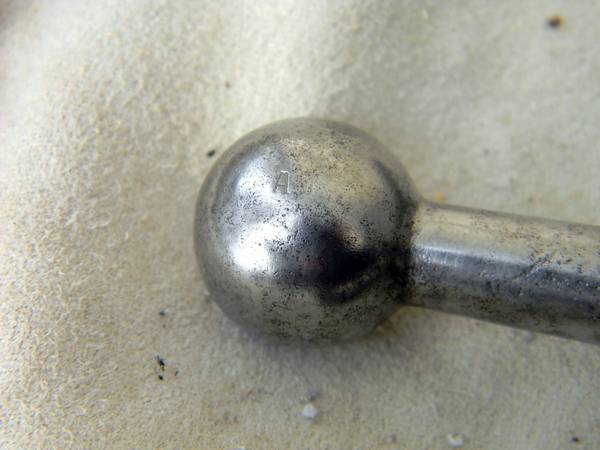

Thank you for reading and looking.
Discussion Section


